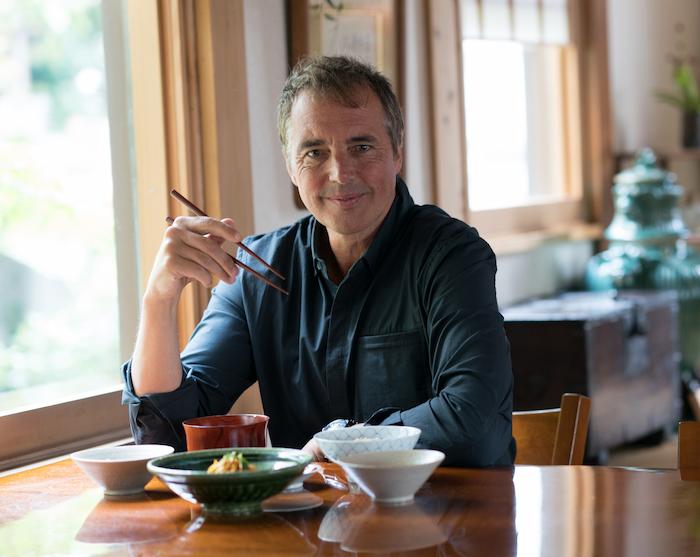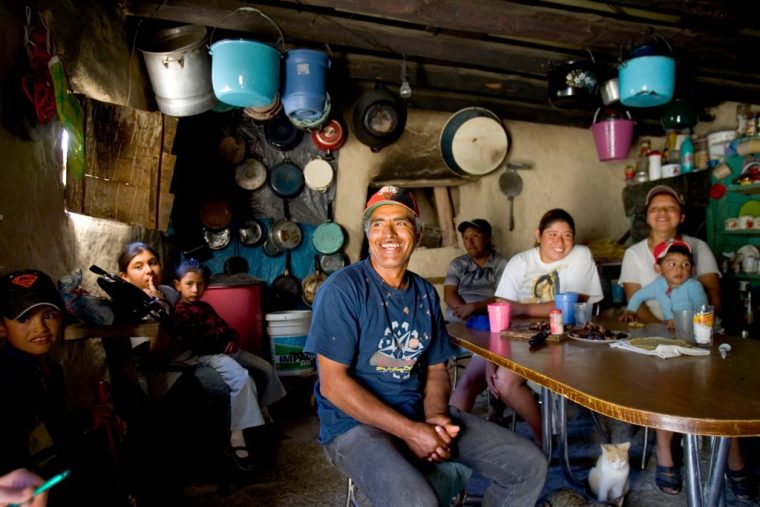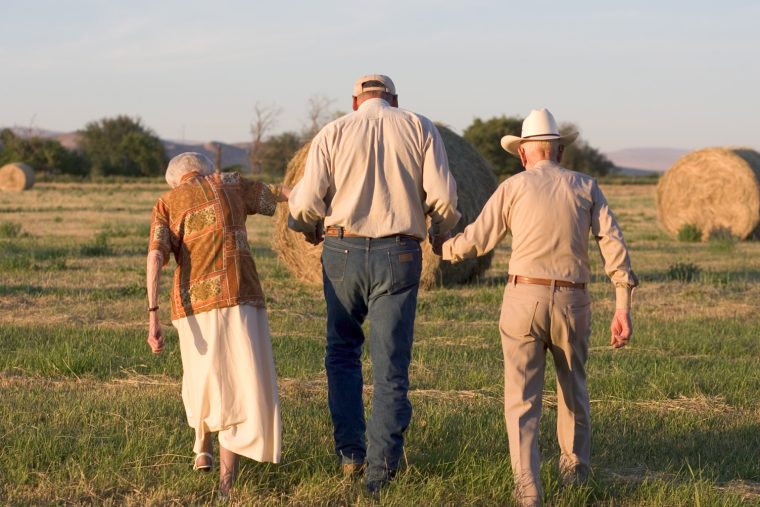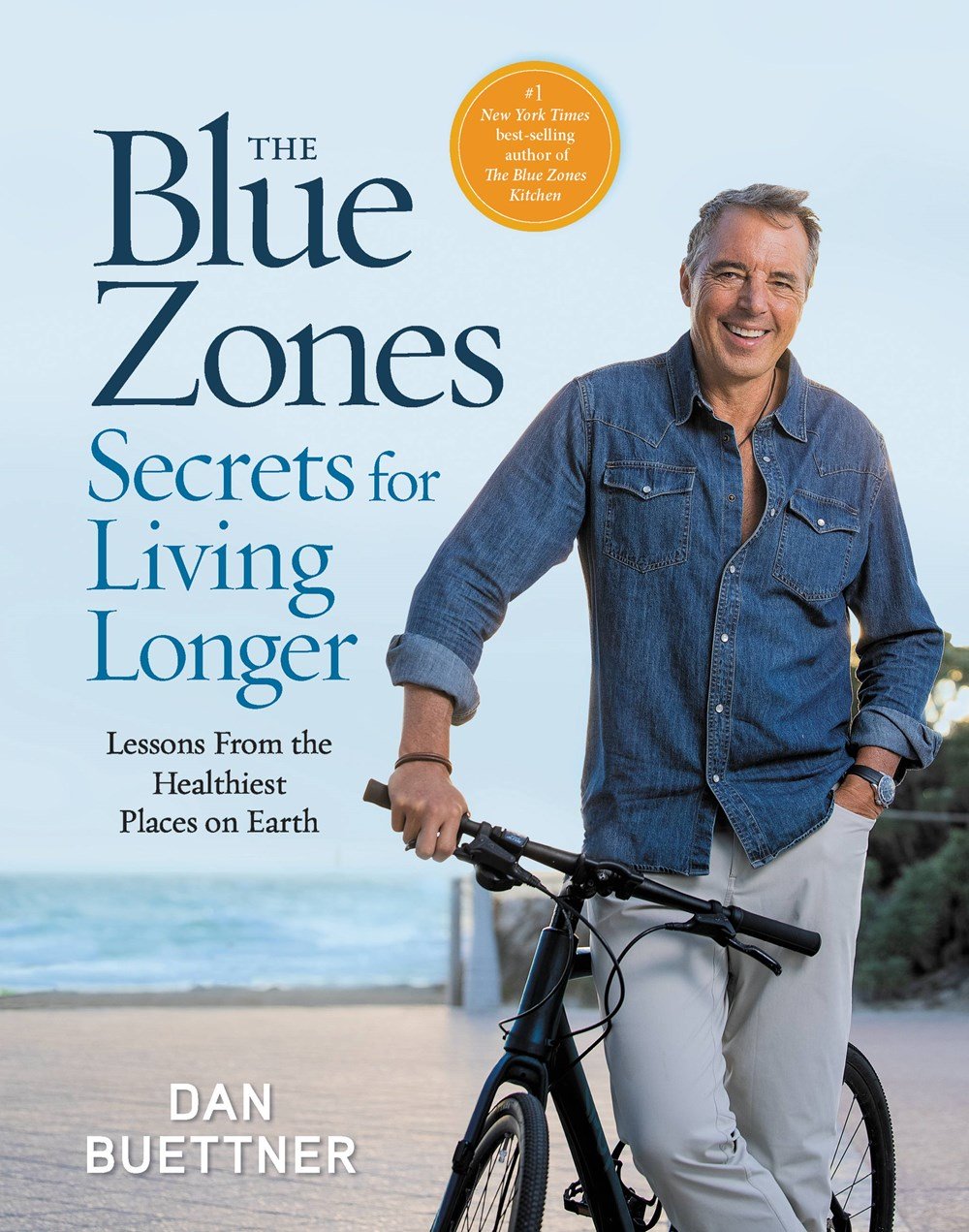It’s good to question conventional wisdom from time to time, but there are degrees of questioning… and one isn’t always enough.
I’ll give you an example.
In the beginning, people threw grain at weddings; most of the people reading this probably picture rice and, in ancient Rome, they might have thrown oats. There was a symbolic meaning to it (thrown oats for sown oats, if you catch my drift), but even if you didn’t know that, hey, it’s festive! Let’s throw stuff in celebration!
Some time later—much more recently than ancient Rome—people questioned this ancient custom and said “maybe we should not throw all this rice at all these weddings.” And this was a good step but, to this day, if you ask people why we don’t throw rice at weddings anymore, a shocking number of people will still tell you that it’s because birds will explode. This is not true and never was.
Clearly, we collectively picked the wrong moment to turn off our Critical Thinking module. One degree of questioning wasn’t enough in this case.
A second degree of questioning is needed for this example—but rather than make things more complicated, it actually simplifies them greatly. The main reason we don’t throw rice is obvious to everyone except a wedding guest: it makes a big mess, the kind that’s actually quite difficult to clean up (especially when, for example, pigeons are gathering to eat it and making “deposits” of their own).
In today’s edition of Eating to 100, we’re submitting two topics—the staple known as rice and a famous expression about getting up early—to at least two degrees of questioning each.
So, in the healthiest possible way, it’s about to get steamy in here.

No doubt you’ve heard the expression early to bed and early to rise makes a man healthy, wealthy, and wise. It’s folk wisdom straight from one of America’s wisest folk heroes, Benjamin Franklin, and probably anybody can appreciate that much about it.
But to many, it’s a lot more than just an old saying.
For a lot of people, “early to bed and early to rise” becomes, at some point in life, a standard—a measure by which you are succeeding or failing. And it’s debatable whether or not it’s a good standard, especially since a lot has changed since Franklin’s time. So…
My task in this article is to interrogate Ben Franklin’s famous saying—to assess its truth, accuracy, and usefulness in the year 2024. Because, as you know from your own life, the fact that everybody’s heard the expression is no guarantee that everybody agrees with it or likes the idea of it. Plenty of witticisms, criticisms, and comebacks have been aimed in its direction over the years (my favorite being Charles Bukowski’s “Throwing Away the Alarm Clock”).
Since the whole point here is to re-examine conventional wisdom, let’s start on the critical side and poke a few holes in Franklin’s “argument”:
1️⃣ Scientifically speaking, Franklin’s claim can’t really be proven or disproven. First of all, health and wealth and wisdom (HWW) are all very spongy, imprecise standards. But even if they were defined precisely, and even if we had plenty of data, and even if there were strong correlations between your sleep/wake times and your HWW, they would still only be correlations. It’s virtually impossible to prove causation here.
In other words: supposing you’ve already achieved HWW, how can you be sure it was specifically your sleep habits, more than a million other variables and their combinations, that explain it? Frankly, you can’t ever be sure.
2️⃣ We don’t all sleep alike, and the “math” of sleep hours and restfulness is more nuanced than most people think. Even if (contrary to reality) everyone slept the same way—we all went down and got up at the same time, fell asleep in the same amount of time, and so on—we would still wake up experiencing different levels of restfulness. Among other reasons, this is because (A) there are variances in the lengths of our sleep cycles and (B) how rested or groggy you feel when you wake up is largely a function of the stage of sleep from which you awakened.
For the finer points, you’ll want to consult the work of someone like Dr. William Dement, who is widely considered the father of modern sleep medicine (see endnote). For now, my point in saying all of this is that everyone is different and there’s no one-size-fits-all plan for how or when to get your best sleep.
3️⃣ A lot of Franklin’s wisdom remains intact even if you ignore the “early” parts. We’ll cover this more on the flip side but, for now, the essential idea is that the amount and quality of sleep you get matter far more than the timing of your sleep. (This isn’t any contradiction to the previous point. In general, more sleep really is better for your health, even if there are some wrinkles and complications in how it all works.)
4️⃣ Quite simply, we don’t all need (or want) to choose our waking hours around a 9-to-5 schedule. Many of us, for reasons personal or parental or professional, need to be up reasonably early most mornings. In other words, there are (sometimes big) consequences if we don’t get up soon enough, and that’s more than enough to override any preferences to the contrary.
But if you’re under the impression that there’s a health advantage to getting up early—that it’s the kind of thing you “should” do even when you don’t want to or need to—you can relax. Healthy sleep requires good conditions but is not time-sensitive per se, so your preferred waking hours just have to be sustainable in the context of your life.
Having said all of that… well, Franklin’s saying did become folk wisdom for a few reasons! So now, let’s switch gears and talk about what the expression gets right and, with the above criticisms in mind, let’s be specific about it:
1️⃣ The aphorism ensures that you get enough sleep, regardless of how closely you follow the “early” parts. Some of Franklin’s wisdom has to be read between the lines—in this case, not so much when he goes to sleep or when he wakes up, but the fact that a full night’s sleep is clearly implied (as opposed to “late to bed and early to rise”).
I wrote more in Edition 7 about sleep deprivation and how we shoot ourselves in the foot with the “I can function on 6 hours” story we tell ourselves.
2️⃣ In similar fashion, the aphorism encourages a consistent sleep schedule. Again, reading gently between the lines, it’s clear in context that “early to bed and early to rise” describes a lifelong habit (as opposed to a one-time decision) and that, if there are nuances and exceptions to that rule, they’re too few to mention.
3️⃣ There are some natural advantages to an early-riser schedule. You could call these “old-school advantages”—not because they don’t still apply nowadays, but because they would have been much more obvious in Franklin’s time:
- The morning is a good time to manage household affairs, whatever that means to you. In ye olden days, this is when the light and household staff were in peak working condition (and the latter needed direction). But we have the same essential needs nowadays—cooking, cleaning, laundry, supply, and so on—and there’s rarely a perfect or ideal time to do them, so why not in the morning if that suits you?
- The morning is a good time to chip away at your studies or any extended projects. Early morning is quiet and, if you’re in the habit of going to bed and getting up early, that means you’re fully awake and energized for deeper focus on those bigger undertakings.
- The morning is a good time for any labor-intensive outdoor work (like farming), as this is when the day is coolest.
4️⃣ “Early to bed and early to rise” is, for what it’s worth, more consistent with our natural, instinctive circadian rhythms. For 99.99% of human history, the question of when to sleep has been relatively easy to answer thanks to a consistent day/night cycle and the simple fact that most pre-electric nights were impenetrably, profoundly dark. Nighttime was the perfect time for us to conserve energy because we couldn’t do much else anyway—and after living with this fact for eons, it’s hard-wired into us.
Thomas Edison added a massive, massive asterisk to this principle just a few seconds ago (in the grand scheme of human history). The fact that we’re no longer bound to the darkness of night means that those original constraints on behavior and “common sense” have disappeared; we can now choose when to have light or darkness and, so long as our bodies and brains get what they need, the timing particulars don’t matter nearly as much as they once did.
There have been plenty of exceptions to Franklin’s rule—plenty of people who have become healthy, wealthy, and/or wise even on a night-owl schedule. I think you can explain the success of the exceptions the same way you explain the success of exemplars: whether or not they stick to the specifics of “natural” sleep patterns, they distinguish between the details that matter for health and the details that don’t, and they bend the latter around the former.
* * * * *
Ben Franklin’s sleep habits, opinionated and divisive though they may be, get a LOT of things right about what we really need out of sleep—and in characteristic Franklin fashion, he managed to word that wisdom more cleverly and carefully than most people realized, to hide more nuances “between the lines” than most people ever manage to see.
It’s a shame he was never president. He’d have been good at it, and we certainly could have wrung some more pithy wisdom out of him that way. But more than that, I like to think that—with good health advice like this more exalted in the mainstream and lived by our leaders—places like America would be healthier for having lived with it closer to the front of our minds.
ENDNOTE: As comedian Mike Birbiglia once joked, Dr. Dement is “a very unfortunate name for a man trying to instill calm,” but Dr. Dement’s seminal book The Promise of Sleep comes highly recommended by the scientific and medical communities (and, for what it’s worth, by Birbiglia as well).
Also: if you’re wondering why a comedian would have such oddly specific material, the answer to your question is Sleepwalk with Me, Birbiglia’s 2008 one-man show about his experiences with REM behavior disorder (I prefer the 2008 album over the 2012 movie because it’s audio-only… trying to picture things is part of the fun here). It’s the rare kind of story that you really, truly couldn’t make up—the kind that’s both funnier and more poignant for being true—and he tells it masterfully. For a sample and preview, here’s the first track.

Rice is kind of a big deal, to say the least.
It’s grown in countless places around the world, eaten in considerably more places than that, and it’s one of the easiest and most likable sources of healthy carbs you can possibly find (hence its inclusion as R in the BRAT diet for illness and weak stomachs).
Not only that, but rice provides the majority of carbohydrates for a huge number of people—potentially over 50% of Earth’s population, which would easily put it in the running for World’s Most Essential Food.
It would lose a few points for not providing ALL the nutrients and amino acids needed to sustain life, but the point remains: rice is healthy, it’s huge, and it’s here to stay. And yet it’s also easily overlooked, something that’s so common in the world that we barely notice it.
So let’s notice it again! For today, I’ll take a crack at five big Q&As about this staple of the world pantry, and I’ll be back with a few more next time.
1️⃣ I always see terms like “long grain,” “short grain,” “brown rice,” and “white rice” on rice packaging. They seem simple enough, but I’ve wondered: are any of those terms synonymous with one another?
In other words: this first question is asking, for instance, whether “brown rice” and “long-grain rice” are two names for the same thing, and the simple answer to that question is no. Those two terms describe two separate properties: grain length and color.
Grain length is exactly what it sounds like: something that can be measured with a ruler. Based on those sorts of measurements, rice is usually sorted into long-grain, medium-grain, and short-grain varieties. Still, you don’t usually need a ruler to distinguish them; their grains are different shapes and sizes, they often smell different, and once cooked, yet other differences begin to appear (like the degree of starchiness and stickiness).
Believe it or not, the color of rice is actually the more complicated property here.
2️⃣ About that: I notice that rice comes in many different colors, but the only two colors that people seem to mention are white and brown. Is there a reason for this?
Yes, there is!
Believe it or not, rice’s color—the detail you’d think would be clearest and most obvious—can actually be one of the most confusing when you’re browsing in the store. This is because the “color” of rice we buy is dictated not so much by its raw, natural, original color as by its degree of processing after harvest, which is where the umbrella terms “brown rice” and “white rice” come into play.
Long story short, a lot of “white rice” actually started its life as a different color. The polishing of rice during processing essentially sands off the bran and germ of the rice grains, leaving only the interior layers which are often colorless. In other words, a typical grain of “white rice” is just the carbohydrate center of a once-whole seed which has lost all of the outer layers that might’ve held color.
Here’s a handy GIF illustrating the transition from whole seed (including inedible chaff/hull) to brown rice to white rice:
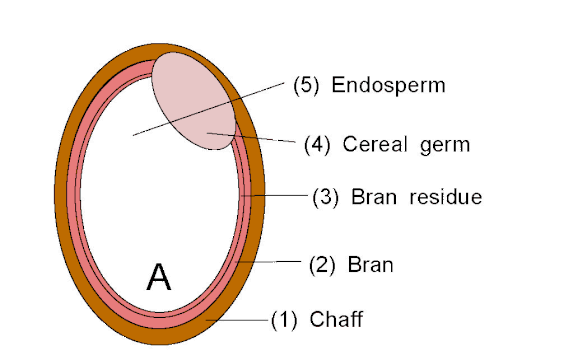
So if you see “white rice” that doesn’t seem entirely white or “brown rice” that doesn’t really seem brown, that’s why. In the context of rice, these labels are broader than the specific colors they call to mind.
3️⃣ I know that brown rice is supposed to be better for you than white rice, but… why is that?
In short, the colorful layers of rice that get sanded off during polishing contain a lot of nutritional value.
By weight, brown rice is 80-90% carbs and 5-10% protein, with fiber and micronutrients filling out the remainder. As mentioned above, the carbs in brown rice are in the center of each grain, with the other nutrients layered around them in the bran and germ—and the processing transition from brown rice to white rice essentially removes that outer 10-20% of each grain, leaving only carbs and a fraction of the original protein.
4️⃣ Is it fairer to say that brown rice is “better” for you OR that white rice is “bad” for you?
I think it’s fairer to say that brown rice is better for you, not that white rice is “bad.”
Simply put, brown rice is better because it contains more of its original nutrients. But even if you whittled away the outermost bran and germ and their contributions, and you left only the white rice and its innermost carbs, you would still have the kind of good, complex carbs we want for clean-burning, steady energy.
The whole-grain option would be even better, sure. But “white rice” doesn’t deserve nearly the same level of stink-eye as “white flour” because the former is way less processed. I’ll talk about the kind of rice I actually consider bad in a moment and, while it is virtually always white in color, it’s not “white rice” per se (it usually goes by another name).
5️⃣ Is brown rice harder than white rice to make?
Is it harder to make? No, not really at all.
However, it does take longer, and I suspect that’s what you really mean to ask if you pose a question like this.
Most rice, once you know how to make it, is pretty mindless: you throw it on the stove or into a rice cooker, you set a timer, and you walk away. Brown rice and white rice are much the same in this regard, even if brown rice takes a bit longer.
Per the previous question’s answer, I don’t think it’s problematic to pick white rice over brown rice. What is problematic is extending this logic further and further until you arrive at the “instant” varieties of rice, which—like “instant” anything—is usually not the best idea for your health.
Instant rice goes well beyond the “sanding down” of conventional white rice. Not only has it been polished down to the bone and stripped of most micronutrients, but it’s also been pre-cooked most of the way and then returned to shelf-stable conditions. This basically means that it’s already halfway to sugary mush when you buy it, and by design—because, hey, you wanted it fast, and this is how they can give that to you.
The principle I explained in Edition 8 holds true here: the more you process a food source, the more volatile (and hazardous) its fuel becomes. Instant rice is problematic for many of the same reasons as instant oatmeal, which I bemoaned in Edition 22.
Just remember: the entire point of “instant” anything is that it’s already been processed as much as it possibly can be in the interest of saving time and effort. You do get what you paid for, but you might not realize all of the ways you’re paying; there are consequences upon the body, both short-term and long-term.
* * * * *
We’ll pick up next time with further inquiries on the many varieties of rice and their preparation, plus a bit of “shop talk” on what makes rice so versatile to chefs and chemists alike. In the meantime, pinch those chopsticks closer together!

Second-Chance Sheet-Pan Fried Rice
Ingredients
1/4 cup soy sauce or gluten-free tamari
3 tablespoons drippy almond butter, peanut butter, tahini, or sunflower seed butter
11/2 tablespoons pure maple syrup
11/2 tablespoons rice vinegar
11/2 teaspoons red pepper flakes
3 cups leftover cooked rice
2 cups diced vegetables, such as onion, carrot, broccoli, cauliflower, peas, corn, bell pepper
1/2 cup almonds (optional)
The Method
- Preheat the oven to 375°F, and line a baking sheet with a reusable baking mat or parchment paper.
- In a bowl, combine the soy sauce, almond butter, maple syrup, rice vinegar, and red pepper flakes. Add the leftover rice and diced vegetables and toss until evenly coated in the sauce mixture.
- Arrange in a single layer on the prepared sheet. Roast for 30 minutes, or until the rice is slightly crispy and the vegetables are cooked, tossing halfway through. If using the almonds, add them to the sheet pan 10 minutes before the dish is cooked completely.

